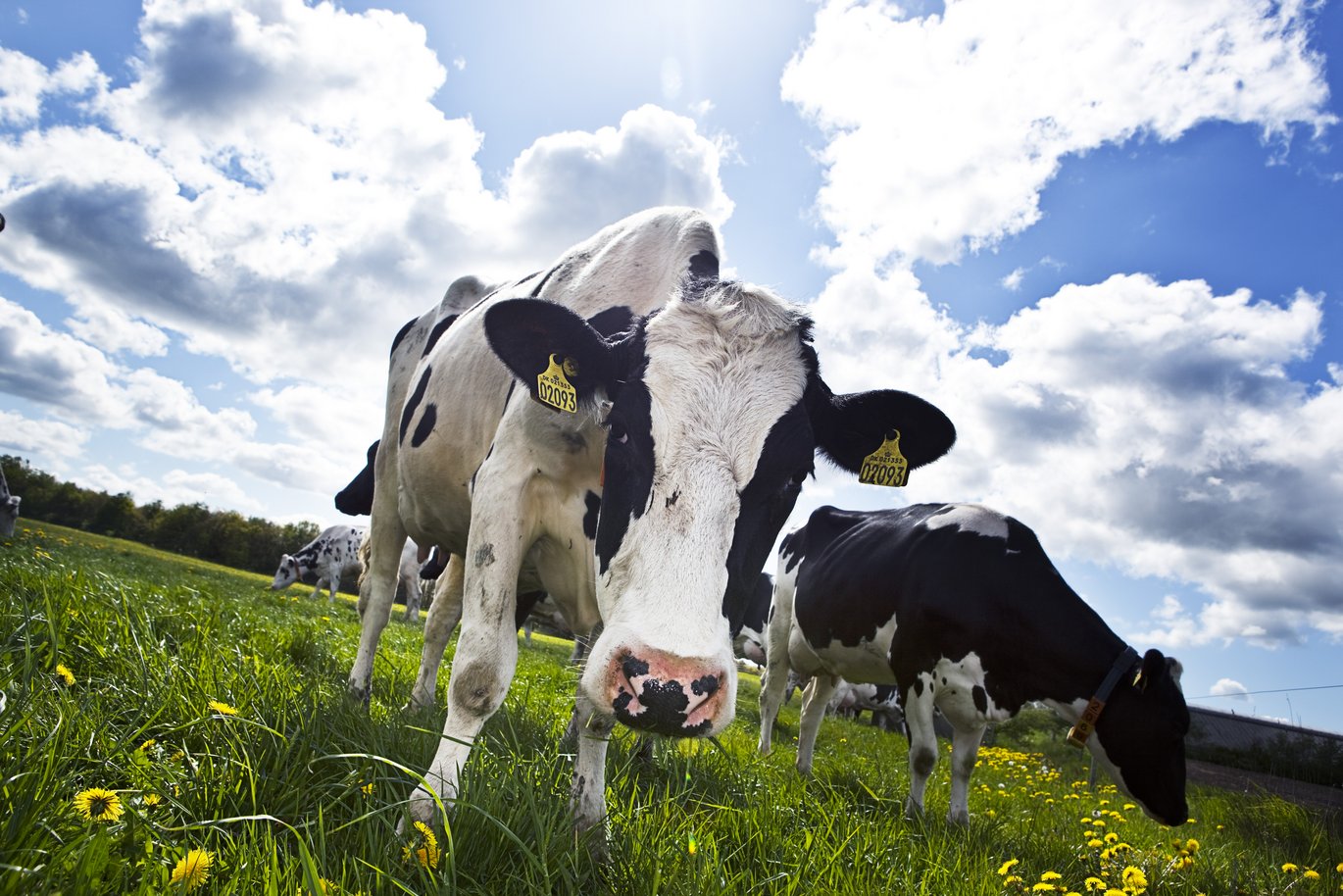New source of greenhouse gas from cows discovered
Scientists from Aarhus University have discovered that a hitherto overlooked group of microorganisms in the rumen of cows plays a significant part in emission of the potent greenhouse gas methane from cattle. This can be of particular importance in the effort to reduce the effect of cattle on climate change.

When a cow burps, it is not just sound and smell that is emitted. The greenhouse gas methane is also emitted from the rumen to the atmosphere. Methane is about 21 times more powerful than CO2. Scientists have therefore recently been focusing a lot on reducing the methane emissions from cows.
It is now evident that a significant factor has been overlooked. There is a group of microorganisms in the rumen, of which very little has been known until now. New studies have, however, not only shown that these microorganisms indeed produce methane, but additionally that they use completely different energy sources from most of the better-known methane-producing microorganisms in the rumen. This attention-grabbing discovery, which has been made by scientists from Aarhus University in cooperation with scientists from the University of Vienna, means that strategies for the reducing the negative effect of cows on the climate should be re-evaluated.
The alternative energy source of the microorganisms
The newly found methane producers – also known as methanogens – are also designated RCC (Rumen Cluster C) and belong to the Archaea kingdom in the same way as the methanogens previously focused upon by scientists. The difference is that the RCC methanogens use another energy source.
- Until now, hydrogen has been considered the primary energy source for methanogens in the rumen of cattle. Thus most methane-reducing strategies focus specifically on reducing the availability of hydrogen in the rumen, explains postdoc Morten Poulsen from Aarhus University.
Previous studies have shown that RCC can constitute up to half of the rumen's Archaea. In his investigations, Morten Poulsen discovered that exactly this group of Archaea uses methylated compounds as an energy and carbon source.
One of the strategies to reduce the methane emission of cows has been to increase the amount of unsaturated fatty acids in the cows’ diet with the intent to reduce the availability of hydrogen for the methanogenic process. The results have been relatively unpredictable and the understanding of the effects has been limited.
Focus on certain groups
The scientists from Aarhus University fed a diet that contained rapeseed oil to lactating cows and examined the effect of the rapeseed oil on the active microorganisms in the rumen.
- Our investigations showed that the fatty diet didn't affect the methanogens that have previously been focused on; that is to say the methanogens that use hydrogen as an energy source. Instead the fatty diet reduced the activity of the RCC-methanogens in the rumen and thus the production and emission of methane, says Morten Poulsen.
This potentially means that it will be possible to focus on energy sources other than hydrogen for the rumen's methanogens, thus opening the door to completely new strategies in order to reduce the methane production in dairy cows.
There is every reason to map out how the emissions of methane from cows and other ruminants can be reduced. These emissions currently constitute approximately 37 per cent of the total human-generated emission of methane to the atmosphere. The demand for milk and meat is expected to rise on a global scale in the coming years, and the negative effects of agriculture on the environment are expected to increase concomitantly unless a solution to the problem is found. In addition, methane production in ruminants constitutes a financial loss for farmers. Hence, the energy from the animal feed that goes into methane could instead be used for fatty acid production by other microorganisms in the rumen and ultimately results in a higher production of meat and milk.
The research was carried out in cooperation with scientists from the University of Vienna.
The research results are published in a scientific article in the esteemed journal Nature Communications and can be read here.
For further information please contact: Postdoc Morten Poulsen, Department of Animal Science, e-mail: Morten.Poulsen@agrsci.dk, telephone: +45 8715 4257, mobile: +45 2515 0255.
